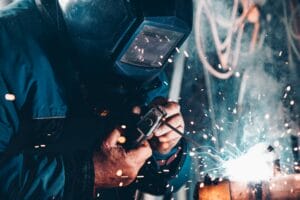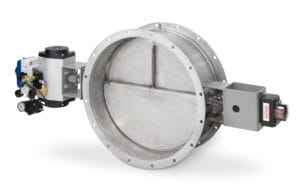Resources
Improving Industrial Indoor Air Quality
May 4, 2021For plant operators and engineers, industrial indoor air quality must be a top priority.
Inefficient and uncontrolled systems run the risk of releasing unstable gases into the environment, polluting the air and putting the health of facility occupants at risk in the process.
 Just how serious is the problem of poor indoor air quality (IAQ)? According to the Environmental Protection Agency (EPA), indoor air pollution is among the top five environmental risks to public health.
Just how serious is the problem of poor indoor air quality (IAQ)? According to the Environmental Protection Agency (EPA), indoor air pollution is among the top five environmental risks to public health.
In order to mitigate poor indoor air quality, it’s critical for industrial facilities to utilize precision, caution, and reliable equipment.
Don’t fall victim to a lack of know-how and preparation; explore the most common causes of poor IAQ and the steps you can take towards prevention.
Common Indoor Air Contaminants
Industries such as oil refineries and mining are known for producing noxious fumes and harmful contaminants—some of which include the following:
Radon
Radon is a naturally occurring gas that is produced when uranium decays. This radioactive gas can accumulate indoors through openings in buildings and facilities.
Studies have shown that exposure to radon can increase the risk of lung cancer by 3% to 14%, with the Center for Disease Control estimating 20,000 related deaths every year.
Mining is one of the most common industries where radon exposure occurs. In fact, since the early twentieth century, there’ve been links found between underground mining and lung cancer caused by radon.
Non-Biological Particles
 Non-biological particles—such as coal dust and synthetic fibers—are light enough to suspend in the air and can include both liquids and solids.
Non-biological particles—such as coal dust and synthetic fibers—are light enough to suspend in the air and can include both liquids and solids.
When non-biological particles have a diameter of 10 micrometers or smaller, they become inhalable to humans.
These particles can get deep into the lungs and even the bloodstream, potentially causing heart or lung damage.
Volatile Organic Compounds
Volatile Organic Compounds (VOCs) are organic chemical compounds with low boiling points at room temperature. Some VOCs occur naturally, while others are man-made (i.e., fossils fuels).
Considered to be one of the most common indoor contaminants, VOCs are up to 10X more likely to occur indoors compared to outdoors.
The adverse effects of VOCs can include central nervous system damage, difficulty breathing, irritated eyes, and much more.
Determining Your Facility’s Indoor Air Quality
With so many potential contaminants to consider, understanding your facility’s current indoor air quality is an important first step to mapping out a plan of action.
Below, we explore a few options for Volatile Organic Compound testing.
Testing for VOCs
A common method for VOC testing involves using a photoionization detector (PID).
PIDs are devices that use high-energy ultraviolet light to measure a facility’s overall VOC levels. With PIDs, results can be quick and reliable—without the use of a lab.
Another option for VOC testing requires taking an air sample that’s sent to a lab for further examination. While this method produces highly accurate and detailed results, the process can be a bit more costly (and time-consuming) than utilizing a PID.
Visit the EPA’s official website for an extensive list of validated test methods for VOCs and other contaminants.
How to Improve Indoor Air Quality
Unsurprisingly, emission control through VOC abatement devices is one of the most impactful ways to prevent and improve poor IAQ.
Regenerative Thermal Oxidizers (RTOs), for example, use incredibly high temperatures to clean dangerous contaminants from the air.
 When used in tandem with industrial dampers, VOC abatement devices are able to maximize their efficiency and total system performance.
When used in tandem with industrial dampers, VOC abatement devices are able to maximize their efficiency and total system performance.
This uptick in efficiency occurs because industrial dampers transport and control how contaminants enter a VOC abatement device, making them a must-have for facilities looking to maximize the effects of their IAQ efforts.
Let Kelair Be Your Trusted IAQ Partner
At Kelair, we design our industrial dampers to help companies improve their environmental conditions by leveraging advanced VOC (volatile organic compound) abatement techniques. Each damper solution is designed to meet the most stringent equipment standards for airflow, temperature, and actuation. You can count on Kelair to be your trusted IAQ partner.
To learn more about our industrial dampers and their IAQ applications, contact a Kelair Products, Inc. representative today.

